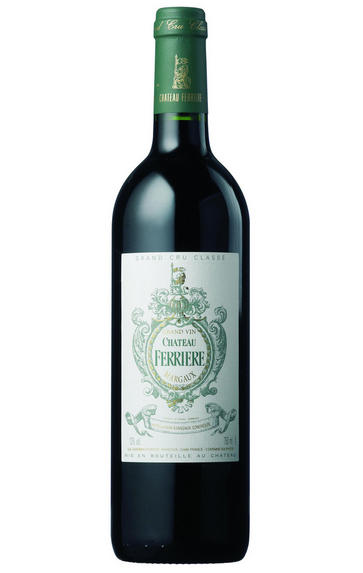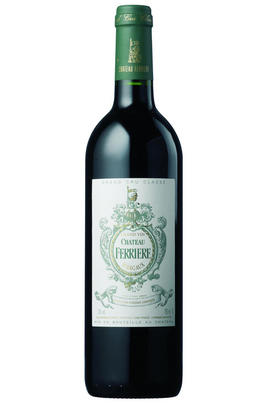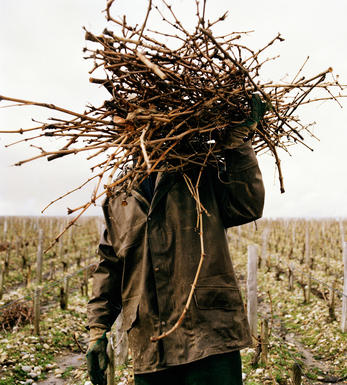
2015 Château Ferrière, Margaux, Bordeaux

Critics reviews
Lisa Perrotti-Brown - 21/02/2018
Drink 2024-2034
Jancis Robinson - jancisrobinson.com - Apr 2016
James Suckling - jamessuckling.com
About this WINE

Chateau Ferriere
One of the least well-known classed growths of the commune of Margaux, the tiny Château Ferrière's 8 hectares are situated right at the very heart of the village of Margaux. After a spell as the second wines of both Châteaux Prieuré-Lichine and Lascombes, the Château is now standing on its own at last and is under the same ownership as Château Chasse-Spleen.
The soil here is classic Margaux with very deep Garonne gravel over Chalk Marl, the perfect soil for Cabernet Sauvignon. It is this superb terroir that led to the Château being awarded 3rd Growth Status in the famous 1855 classification of the Mèdoc. The vineyard is planted with 80% Cabernet Sauvignon, 15% Merlot and 5% Petit Verdot.
The wine is aged for sixteen to eighteen months in oak barrels, 60% of the barrels are new each vintage.

Margaux
If Pauillac can be seen as the bastion of ‘traditional’ Red Bordeaux, then Margaux represents its other facet in producing wines that are among Bordeaux’s most sensual and alluring. It is the largest commune in the Médoc, encompassing the communes of Cantenac, Soussans, Arsac and Labaude, in addition to Margaux itself. Located in the centre of the Haut-Médoc, Margaux is the closest of the important communes to the city of Bordeaux.
The soils in Margaux are the lightest and most gravelly of the Médoc, with some also containing a high percentage of sand. Vineyards located in Cantenac and Margaux make up the core of the appelation with the best vineyard sites being located on well-drained slopes, whose lighter soils give Margaux its deft touch and silky perfumes. Further away from the water, there is a greater clay content and the wines are less dramatically perfumed.
Margaux is the most diffuse of all the Médoc appelations with a reputation for scaling the heights with irreproachable wines such as Ch. Margaux and Ch. Palmer, but also plumbing the depths, with too many other châteaux not fulfilling their potential. There has been an upward shift in recent years, but the appellation cannot yet boast the reliability of St Julien. However, the finest Margaux are exquisitely perfumed and models of refinement and subtlety which have few parallels in Bordeaux.
Recommended Châteaux: Ch. Margaux, Ch. Palmer, Ch. Brane-Cantenac, Ch. Rauzan-Ségla , Ch. Dufort-Vivens, Ch. Ferrière, Ch. du Tertre, Ch. Giscours, Ch. d'Angludet.

Cabernet Sauvignon Blend
Cabernet Sauvignon lends itself particularly well in blends with Merlot. This is actually the archetypal Bordeaux blend, though in different proportions in the sub-regions and sometimes topped up with Cabernet Franc, Malbec, and Petit Verdot.
In the Médoc and Graves the percentage of Cabernet Sauvignon in the blend can range from 95% (Mouton-Rothschild) to as low as 40%. It is particularly suited to the dry, warm, free- draining, gravel-rich soils and is responsible for the redolent cassis characteristics as well as the depth of colour, tannic structure and pronounced acidity of Médoc wines. However 100% Cabernet Sauvignon wines can be slightly hollow-tasting in the middle palate and Merlot with its generous, fleshy fruit flavours acts as a perfect foil by filling in this cavity.
In St-Emilion and Pomerol, the blends are Merlot dominated as Cabernet Sauvignon can struggle to ripen there - when it is included, it adds structure and body to the wine. Sassicaia is the most famous Bordeaux blend in Italy and has spawned many imitations, whereby the blend is now firmly established in the New World and particularly in California and Australia.


Buying options
Add to wishlist
Description
Fine expression of cassis Cabernet fruit. Has elegance and depth in a straightforward style. Could be more complex but will mature well.
Drink: 2021-2030
Steven Spurrier - decanter.com
wine at a glance
Delivery and quality guarantee